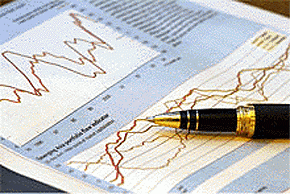
By Roger J Kerr

A consistent theme in this column over the last 18 months has been a generally negative view on the Australian economy.
The view has been that following the slide in metal and mining commodity prices in 2012/2013 the Australian economy would struggle with the adjustment needed to replace the lost economic growth/jobs in the resources sector with stronger activity in the non-resources sector (i.e. manufacturing, agriculture, retail etc).
The Aussie dollar remained higher for longer and as most non-resources exporters in Australia fail to operate appropriate currency hedging policies the anticipated economic growth outside mining failed to materialise.
Right through last year the RBA were supremely confident that economic growth would come from these other sectors.
They were wrong, and last week’s 0.25% OCR cut by the RBA was an admission that the much lower revenue/incomes from the fall in hard commodity prices was still negative for the Aussie economy.
Despite record historically low mortgage interest rates, Australian consumer confidence has not improved as job and income insecurity trumps any increased disposable income from lower mortgage rates.
It also has to be said that as Australia has not experienced an economic recession since 1990, corporates and industries have really struggled to adjust their business models to the new reality of lower prices/sales revenues as there is not much management experience in cutting the cloth.
Australia’s overall flabby cost structures have made them uncompetitive on the global stage with labour market rigidities a major impediment to addressing that situation.
Fiscal austerity policies from the Federal Government and overly indebted state governments have not helped consumer and business confidence either. Add on the current vote of no confidence in the Prime Minister from his own party and all is not well in the Land of Oz.
An early exit from the upcoming cricket World Cup for Australia would be a further national calamity.
The gloomy picture painted above of luck having seemingly run out for the “lucky country” could easily lead to a conclusion that the Australian dollar will remain under downward pressure going forward following its 29% depreciation from a high of $1.1000 to the USD in 2013 to 0.7800 today.
I am not so sure about that conclusion.
As the NZ dollar tracks the Aussie most of the time, the future direction of the AUD/USD exchange rate is therefore fundamental to any view on the Kiwi dollar from current levels of 0.7350.
The recent slide of the Aussie dollar from above 0.9000 to 0.7800 has essentially caught up with the earlier decline in metal and mining commodity prices. The currency needed to adjust to the lower commodity prices and it has now finally adjusted.
The combination of the lower AUD currency value and the 50% reduction in oil prices over recent months has dramatically improved the profitability of the mining/resources sector in Australia from a poor situation to something more acceptable. The sea freight bill to shift the iron ore and coal to China, Korea and Japan has been halved.
After being out of favour for the last two years, the listed mining/resources companies may start to attract new sharemarket investors.
The Aussie sharemarket has been a serial underperformer over the last two years relative to the strong gains witnessed on US, Japanese, European and NZ sharemarkets. The out of favour mining stocks preventing any general improvement in Australian shares over this period.
As an asset class and for geographical diversification reasons the relative low value of Australian shares suddenly looks very attractive for global investment funds compared to economically bankrupt Europe and fully valued US shares.
I would anticipate large scale portfolio/capital investment inflow returning Australia this year, attracted by the lower AUD entry point and much more upside in Australian equities relative to other markets.
All the bad news is already priced into the AUD/USD exchange rate at 0.7700/0.7800 and provided Chinese demand for the mining commodities does not deteriorate any further, the turning point for the Australian economy and Aussie dollar may be already with us.


-----------------------------------------------------------
To subscribe to our daily Currency Rate Sheet email, enter your email address here.
Daily exchange rates
Select chart tabs
Roger J Kerr is a partner at PwC. He specialises in fixed interest securities and is a commentator on economics and markets. More commentary and useful information on fixed interest investing can be found at rogeradvice.com

We welcome your comments below. If you are not already registered, please register to comment.
Remember we welcome robust, respectful and insightful debate. We don't welcome abusive or defamatory comments and will de-register those repeatedly making such comments. Our current comment policy is here.